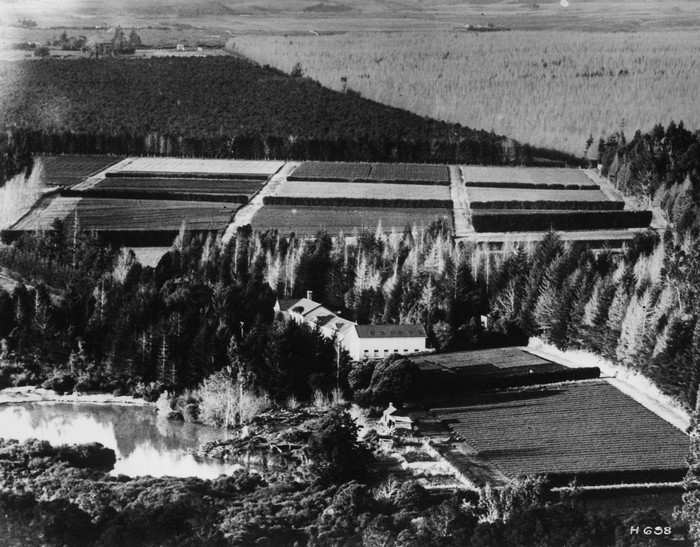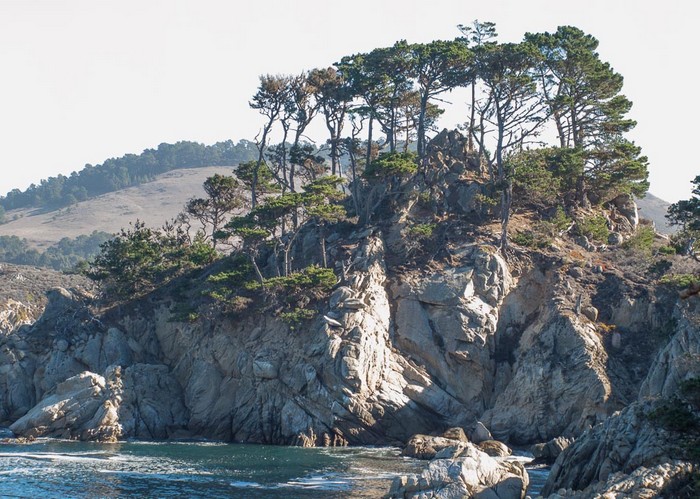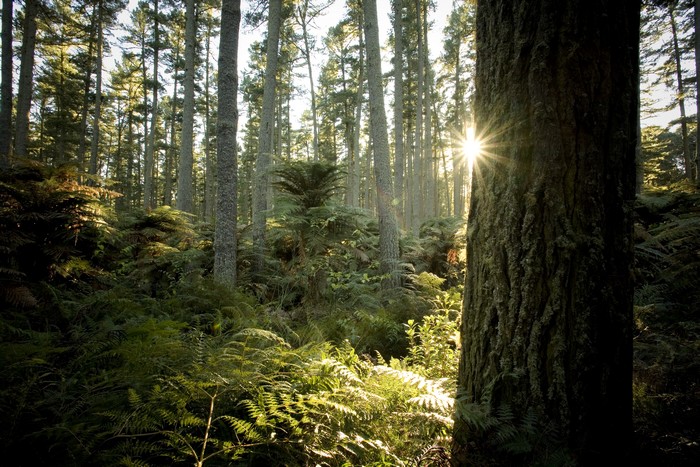Forestry grew from here
A nursery was established
The forests surrounding this location are part of a science experiment that has been running for over 120 years. The first exotic (non-native) trees were planted in the Whakarewarewa Forest in 1899. Using seeds carried to New Zealand by sailing ships, many tree species planted were among the first large experimental forests to help guide the afforestation of New Zealand.
This pioneering work was hugely important to develop planted forests in New Zealand. It allowed a forestry industry to flourish and helped save New Zealand’s indigenous forests from logging.
Aotearoa New Zealand is the last habitable land mass to be settled by humans. More than 80% of the land was blanketed in forests when the first Polynesians arrived in Aotearoa around 1250 to 1300AD. Māori soon put this country’s trees and plants to good use – as sources of food, shelter, carving, canoes, weapons and medicine. Early European settlers logged some of the largest trees with kauri being particularly prized for timber and ship building. From around the 1840s European settlers felled forests to make way for grassland farming of cattle and sheep.
By the 1860s there was already concern about the loss of native forest in New Zealand. Many of the native tree species would take 60 or more years to regrow. An idea was hatched to try and grow exotic trees in Rotorua because they grow much more quickly and can be cut down and the land re-planted in only a few years.
The Whakarewarewa Nursery was established in 1898 on essentially the land upon which Scion sits today. This nursery, created as part of a national afforestation scheme, was established on 50 acres of land at the base of low hills. The nursery eventually oversaw the establishment of exotic trees on the adjoining lands. By 1909, 5000 hectares had been planted in the Whakarewarewa Forest which surrounds Scion.

Trial plantings continued for many years and in 1901, the first Californian Coast Redwoods were planted. The Californian Redwoods that grew in the nursery turned out to not be very good for growing in large numbers. The grove of Redwood trees is declared a memorial to those NZ Forest Service members who died in the First and Second World Wars.
In the 1970s this experimental forest became open to the public and the network of walking tracks quickly expanded. A decade later, mountain bike pioneers began a series of cycling tracks through the planted forests. The diversity and beauty of those original forest plantings helped Rotorua gain a reputation as a global mountain biking mecca.
The area opposite the Redwoods Visitors Centre, is called the ‘Scion Dog Park’. As its name suggests it’s a place to exercise your canine companions. In here you’ll discover a patchwork quilt of different species of trees growing in small neatly square clusters. This remains an active science zone where new species of trees and ways to manage them are trialled.
Radiata pine
Radiata pine is the tree species that has loomed large over the story of forestry in New Zealand and 75 years of scientific research. It contributes $5.5 billion to New Zealand’s economy each year.
Known as Monterey Pine, its native range is a thin strip of just 7000 hectares along the Californian coastline. With cool, moisture-laden fog along the coast it occupies a very narrow environmental niche. The fog provides just enough moisture for Monterey pine to grow year-round in an area that receives very little rainfall. The rarity and scraggly growth habit of Monterey pine made it a prized possession among English ‘gentlemen collectors’ soon after its discovery in 1830. In 1835 an English taxonomist noted the seeds ‘radiating’ in lines around the cone and named the species Pinus radiata.

Howling north-westerly winds made the Canterbury plains barely habitable and by the 1850s a mad scramble was on to plant almost any tree imaginable to block the winds. Radiata pine proved to be the standout shelter tree. It grew much faster than any other tree species and tolerated a wide range of conditions. Within 10 years large quantities of seed were being imported directly from California.
In the 1890s the first radiata pines were planted in the Whakarewarewa. At the time, they were not even considered as a serious forest species. The only reason for their planting was to provide shelter for the more fancied tree species such as Douglas-fir.
It soon became apparent that radiata pine, if grown densely enough could grow tall and straight and would be a commercially viable species. Plantings of vast tracts of radiata pine in the Central North Island began in the 1920s and continued through the 1930s and 40s. The forests grew so well and the wood properties for pulping, timber framing and plywood exceeded all expectations, so all attention turned to radiata pine.
By the end of the 1960s it was commented that scientists at FRI knew radiata pine better than any team of scientists in the world had ever known a single tree species. Today we know radiata pine from the level of DNA to its contribution to global climate change. That accumulated knowledge means that we can manage and plan our planted forest of today for the future benefit of New Zealand.
Forests for our future
Forests are an incredibly valuable resource, storing massive amounts of carbon, helping to purify water and air, ensuring natural biodiversity, and providing livelihoods for millions of people. But despite their importance, indigenous forests are disappearing every minute.
If New Zealand plans to meet its climate change targets, we need to plant trees – and now.
Expansion of planted forests remains one of the most cost-effective strategies for removing and storing CO2 from the atmosphere, in addition to producing timber on a sustainable basis.

New Zealand’s planted forests are among the most productive and sustainable in the world. Our climate and soils combined with decades of technological breakthroughs in forestry establishment, growing, harvesting and processing mean that our forests are the envy of many. Forests provide social and environmental benefits that all New Zealanders enjoy.
New Zealand is a small player in the international forestry industry, contributing only 1.1% of the world's total supply of industrial wood and 1.3% of the world's trade in forest products.
In 2021 forestry exports as logs and processed wood products contributed $6.25 billion to the economy or about 1.6% of New Zealand’s GDP.
Today, only 0.03% (or 10,00 tonnes) of the 33 million tonnes of logs harvested in New Zealand are from indigenous tree species.
